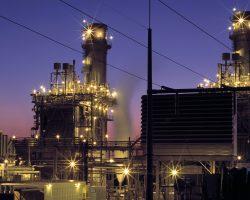Security | Threat Detection | Cyberattacks | DevSecOps | Compliance
Latest Posts
Protecting Your OT Network: The Power of Protocol Isolation
The demand for technology that can support secure user access, both remote and onsite, has expanded beyond IT environments to include the operational technology (OT) and industrial control systems (ICS) that enable organizations in a variety of critical infrastructure (CI) sectors to function. However, the priorities of IT environments (i.e., the confidentiality, integrity, and availability of data).
ICS/OT Security Practitioners Agree. Your Technology Matters.
SANS released its annual ‘State of ICS/OT Cybersecurity’ report in October 2022. It reflects survey results from 332 ICS/OT organizations representing a range of industrial verticals.
OT:ICEFALL: Addressing Operational Technology Equipment Flaws with Zero-Trust Controls
A new report on Operational Technology (OT) equipment flaws from automated cybersecurity software company Forescout outlines the alarming state of OT security. The report titled OT:ICEFALL was crafted by researchers at the company’s Vedere lab. It breaks down 56 vulnerabilities affecting 26 devices from 10 vendors in OT.
"Pipedream" Malware Targets ICS: What Critical Infrastructure Owners Need to Know
Troubling new malware designed to facilitate attacks on a wide array of critical infrastructure – from oil refineries and power plans, to water utilities and factories – is raising concerns for its versatility. The malware, named Pipedream by Dragos and Incontroller by Mandiant, who have both tracked and researched the toolkit, is potentially capable of gaining full system access to multiple industrial control systems (ICS) and supervisory control and data acquisition (SCADA) devices.
Understanding ISA/IEC 62443 Standards for Industrial Networks, OT, and Critical Systems
There are many significant technology-enabled changes taking place in industrial environments today. Smart factories and Industry 4.0. The Industrial Internet of Things (IIoT). The convergence of information technology (IT) and operational technology (OT). All of these things are introducing digital technologies at a fast pace to improve operations, increase productivity, enhance oversight, and increase profitability.
US Officials Warn - Heightened Risk of Ransomware Attacks on Municipal Utilities
US Officials warn of potential ransomware attacks in response to increased sanctions on Russia and have asked state and local officials to consider how ransomware attacks could disrupt the provision of critical services. “Right now, the biggest concern we have are preparations for potential impacts to US utilities and industrial critical infrastructure, (Dragos)”
"Shields Up" Strategy - the New Reality for U.S. Critical Infrastructure
Russian hackers are attempting to broadly penetrate Ukrainian infrastructure to disrupt critical services such as electricity, transportation, finance, and telecommunications. US Government urges US Critical Infrastructure owners to harden their systems and implement a “shields up” strategy. As tensions escalate, Russian cyberattacks could seek to disrupt US electricity, gas, and other systems, warn the FBI and Department of Homeland Security.
The Ideal Simple and Secure Connection Solution for OT Remote Access
Industrial companies worldwide are adopting capabilities that allow for remote operations. The pandemic has led companies to consider how they can reduce an onsite workforce while continuing with normal operations. Likewise, the worker shortage is leading companies to think in terms of a flexible workforce that may include remote staffing and flexible resourcing.
Understanding the Unique Challenges of Securing OT Systems in 2022
As industrial organizations continue to embrace change by leveraging the latest technologies into their daily operations and production cycles, they have also been tasked with embracing remote and hybrid work environments – all while maintaining operational continuity. Utilizing advanced technologies has enabled these organizations to reduce expenses, expedite production time, and elevate customer service levels.




